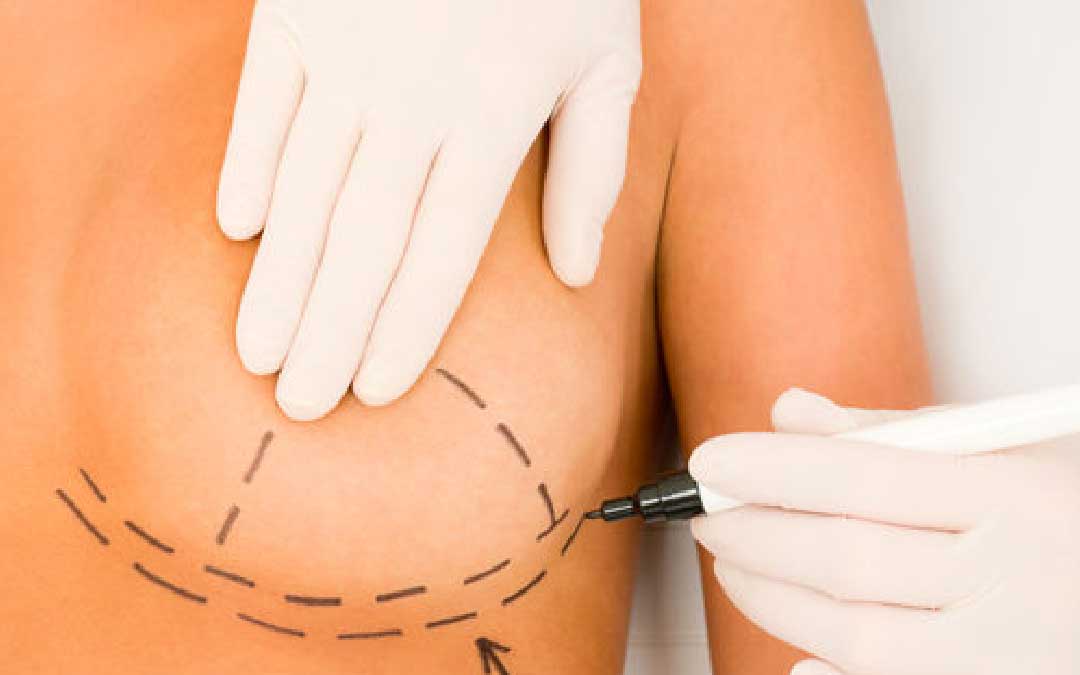Enlargement of the breast area for various reasons can cause several issues for individuals. To address this, breast reduction surgery is performed. This surgery, which is conducted under general anesthesia, utilizes either the “lollipop” or the “inverted T” technique. The procedure involves the removal of excess breast tissue and skin and typically takes 2.5 to 4 hours. It is generally performed on patients aged 20 and older.
What is breast reduction surgery, and when is it necessary?
Breast reduction surgery is performed not only for cosmetic reasons but also for medical purposes. Patients often seek this surgery to correct sagging caused by oversized breasts, achieve better symmetry, enhance aesthetic appeal, and overcome challenges in finding suitable clothing. Medically, the surgery can help alleviate neck, shoulder, and back pain associated with large breasts and can prevent spinal curvature. Additionally, it may address issues such as rashes or fungal infections under the breasts, prevent wounds, and promote healing of pressure sores caused by bra straps. Large breasts can also hinder daily physical activities.
Genetic factors, lifestyle choices, and various external influences can all affect breast size and shape. Conditions such as being overweight, pregnancy, breastfeeding, hormonal changes, health issues, and aging can also lead to alterations in breast appearance. Breast reduction surgery aims to address both medical and aesthetic concerns.
Considerations before breast reduction surgery
Preparing for breast reduction surgery involves a comprehensive assessment process. This includes evaluating both physical and mental health, as well as any breast-related medical conditions. Photographs and measurements are taken to document the current state of the breasts, and past breast issues and treatments are reviewed.
To reduce the risk of surgical complications, it is advised to stop smoking at least one month prior to the procedure, as smoking can impair circulation. Individuals classified as obese may face a higher risk of complications during surgery, so it is recommended that they focus on weight loss before planning the surgery. Taking these steps is essential for ensuring the breast reduction procedure is conducted safely and effectively.
How is breast reduction surgery performed?
Breast reduction surgery involves the removal of excess skin and fatty tissue from the breasts. This medical procedure is typically conducted on individuals over the age of 20 who have completed their physical development. In certain cases of medical necessity, it may be performed on individuals younger than 20, but only after ensuring that hormonal regulation and physical growth are complete. The surgery is performed under general anesthesia and generally takes between 2.5 to 4 hours, depending on the size of the breasts. There are two primary incision techniques used in this procedure: the “lollipop” method and the “inverted T” method.
In the lollipop technique, a circular incision is made around the perimeter of the nipple, allowing for the removal of excess breast tissue and skin. If necessary, the nipple is lifted to achieve a more aesthetically pleasing appearance. After removing the excess tissue, the skin is meticulously closed, and a drain is inserted to facilitate healing and remove any excess blood. Alternatively, the inverted T method involves making an incision in the lower part of the breast that resembles an inverted “T.” Similar to the lollipop method, after excess breast tissue and skin are removed, the procedure concludes with careful closure of the skin.
Post-surgery care
After the surgery, patients are required to stay in the hospital for one day. Once the drain is removed and the dressing is changed, they can be discharged. Follow-up check-ups are scheduled for the first and second weeks to monitor the healing process. Special creams are applied to help dissolve stitches and minimize scarring.
Patients are advised to rest at home for one week while wearing a supportive bra, similar to a sports bra. After this period, they can gradually return to their daily activities. However, it is recommended to continue wearing the special bra for six weeks post-surgery.
Patients may experience slight stinging and tingling sensations for 6 to 12 months after the procedure, but these sensations typically do not affect overall quality of life.

Healing process after breast reduction surgery
Following breast reduction surgery, it is recommended to rest at home for one week. After the operation, it is quite critical to take the antibiotics and painkillers prescribed by the physician at the recommended dose for the recommended duration. The use of a sports bra reduces breast pressure and prevents movement, while it alleviates pain and plays an important part in shaping the breast.
Post-operative dressing change days determined by the physician are very important. These dressing changes help to promote healing while reducing the risk of infection. Actions like carrying heavy weights, pushing, and pulling should be avoided for about 4 weeks. Light exercises should only be practiced after 1 month. Activities that strain the arms and chest muscles should be avoided.
Post-operative breast tissue is usually swollen and has edema. As the swelling subsides in about 3-4 weeks, it can usually take up to 1 year for the breasts to acquire their final appearance. For tissue healing and scar reduction, smoking and alcohol consumption should be avoided for at least 1 month after surgery. Smoking and alcohol consumption can adversely affect cell regeneration and enhance the visibility of surgical scars.
Frequently asked questions about breast reduction surgery
What are the causes of large breasts?
Breast hypertrophy refers to the condition where breasts are larger than average, and depending on the extent, it is termed macromastia, hypermastia, or gigantomastia. This condition can arise at any stage of life, develop slowly or rapidly, and affect one or both breasts. The causes include:
- Idiopathic type: No identifiable cause, often linked to obesity and hormonal imbalances.
- Puberty-induced type (juvenile type): Triggered by sex hormones, typically between ages 11 and 19.
- Pregnancy-induced type: Caused by pregnancy hormones, usually during the first trimester, occurring in about one in 100,000 pregnancies.
- Medication-induced type: Linked to certain medications such as D-penicillamine and cyclosporine.
- Immune system disorder-associated type: Can be related to diseases like SLE, Hashimoto’s thyroiditis, chronic arthritis, and psoriasis.
- Menopause
- Excessive weight gain
Breast size levels are categorized as:
- Mild: Less than 300 grams of excess tissue.
- Moderate: Between 300-800 grams of excess tissue.
- Advanced: More than 800 grams of excess breast and fat tissue, with the weight of the removed tissue recorded during surgery.
Is there a risk in breast reduction surgery?
As with any medical procedure, breast reduction surgery carries certain risks. These may include:
- In rare cases, infection and bleeding may occur following the surgery.
- Nipple sensation can be affected post-surgery, potentially leading to impaired sensitivity.
- The milk ducts might be damaged during the operation, reducing the breast’s ability to produce milk.
- If the surgery is not carried out under optimal conditions, various health complications can arise.
The skill and experience of the plastic surgeon significantly reduce the likelihood of these risks.
Will there be scars after breast reduction surgery?
As with most surgical procedures, breast reduction surgery leaves scars on the skin. The size and appearance of these scars depend on the technique used.
In surgeries using the lollipop incision method, the scar is typically less noticeable due to the smaller incision made around the nipple. The color contrast between the nipple and the surrounding skin often makes the scar nearly invisible.
For surgeries using the inverted T incision method, the scar is larger. The vertical incision from the nipple gradually fades and blends with the skin tone, while the horizontal scar along the breast fold is usually hidden from view. The visibility of the scar depends on how much the breast has sagged and the extent of reduction.
How long does breast reduction surgery take?
The duration of breast reduction surgery depends on the size of the breast, typically lasting between 2.5 and 4 hours.
Is there an age limit for breast reduction surgery?
Patients over the age of 20 with large breasts can undergo breast reduction surgery. In cases where breast size becomes disproportionately large during adolescence, affecting physical and psychological well-being, surgery may be performed earlier with consultation from endocrinology and psychiatry specialists.
Disadvantages of large breasts
Disadvantages of having large breasts primarily include psychological challenges, especially in adolescent girls who may feel self-conscious due to significantly larger breasts compared to their peers. This can result in lowered self-esteem, body image dissatisfaction, and even social isolation. Physically, large breasts can lead to shoulder, back, and neck pain due to their weight, which can cause posture issues. Physical activities, especially running, may become difficult, and breathing while lying down can be affected as the full expansion of the lungs may be restricted. Additionally, rashes, sores, and skin infections under the breasts are common issues.
Finding standard clothing can also be problematic, as there may be a size mismatch between the upper and lower body, often requiring special clothing adjustments. These physical and psychological difficulties are key reasons why breast reduction surgery is often considered.
Advantages of breast reduction surgery include achieving a breast size that is more proportional to the body, providing numerous physical, mental, and social benefits. After the surgery, back, neck, and shoulder pain is alleviated, posture improves, and issues like skin rashes beneath the breasts are resolved. Physical activities become easier, and breathing is more comfortable, enhancing overall physical well-being.
The improved breast appearance boosts self-esteem and confidence, leading to a more positive mental outlook. With smaller breasts, clothing options increase, allowing individuals to wear the styles they prefer. Psychosocial well-being is also improved post-surgery, as feelings of depression decrease and social interactions become more positive. Additionally, the reduction in breast tissue can lower the risk of breast cancer, providing long-term health benefits.
Breast reduction surgery and breastfeeding
In surgical methods other than the free nipple graft technique, the nipple is moved as a block in a manner that preserves its connection to the milk ducts and milk glands. This allows the breastfeeding function to be maintained after breast reduction surgery. Since the time between the surgery and breastfeeding will overlap with the gestation period, there will be adequate time for breastfeeding.
It is advisable to wait at least 6 months and preferably up to a year after breastfeeding to allow the milk ducts to return to their previous function.
Is breast reduction without surgery possible?
No, breast reduction without surgery is not possible. However, overweight individuals may experience a decrease in breast size to some extent when they lose weight. If there are medications or health conditions causing breast enlargement, those factors should be addressed first.
Does breast reduction surgery cause breast cancer?
Breast reduction surgery does not cause cancer; in fact, it may indirectly help lower the risk of cancer by reducing the amount of breast tissue that could potentially develop into cancer. Additionally, because the breast tissue removed during surgery is examined pathologically, early-stage cancers can be diagnosed and treated sooner.
Breast reduction surgery prices
“Breast aesthetic surgery prices,” “breast reduction surgery cost in Ankara,” and “breast reduction surgery price 2025” are among the most frequently asked questions by patients planning this procedure. Several factors, such as your city, the hospital where the procedure will be performed, and the specific regions, can affect the prices. You can obtain necessary information regarding breast reduction surgery fees from your plastic surgeon. For more detailed information, please contact us at +90 (0536) 511 40 51 or via email at ersoykonas@gmail.com.



